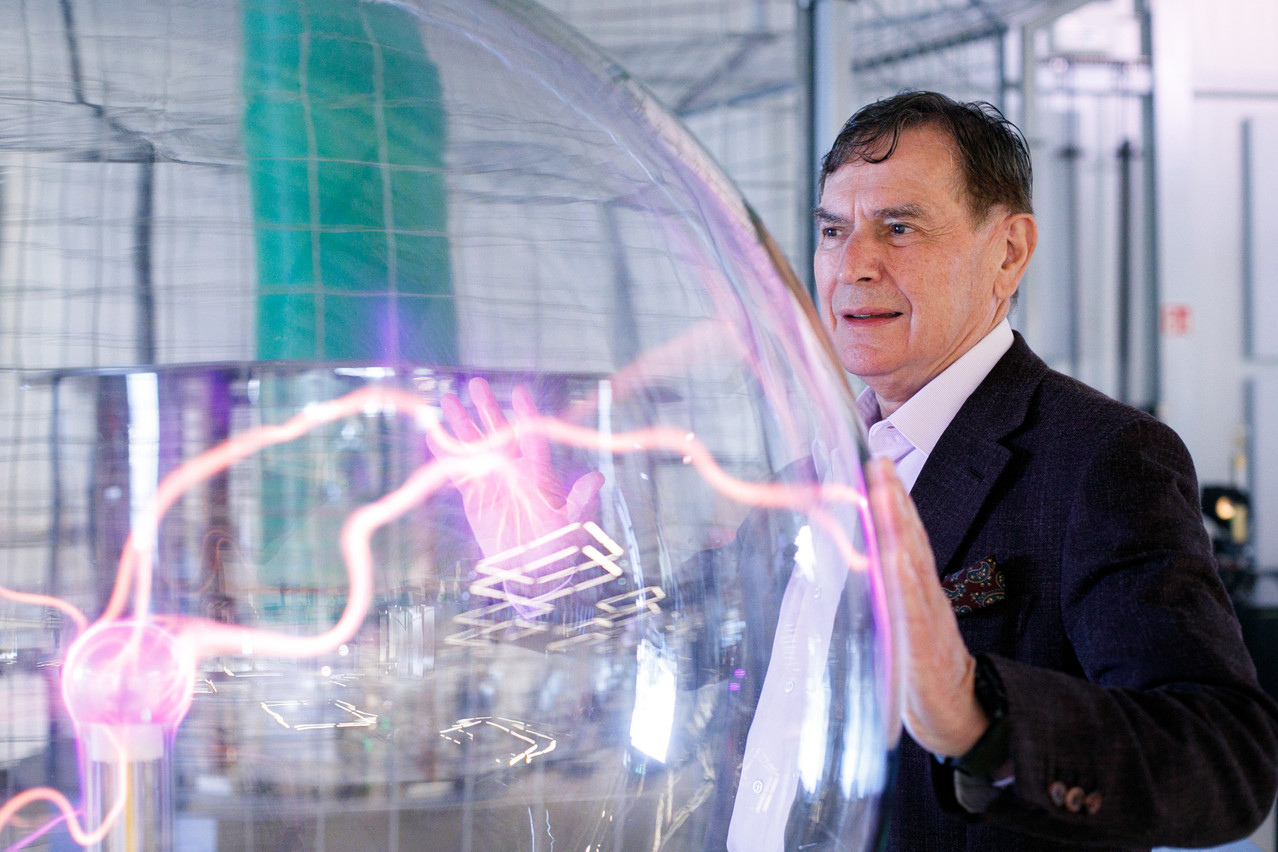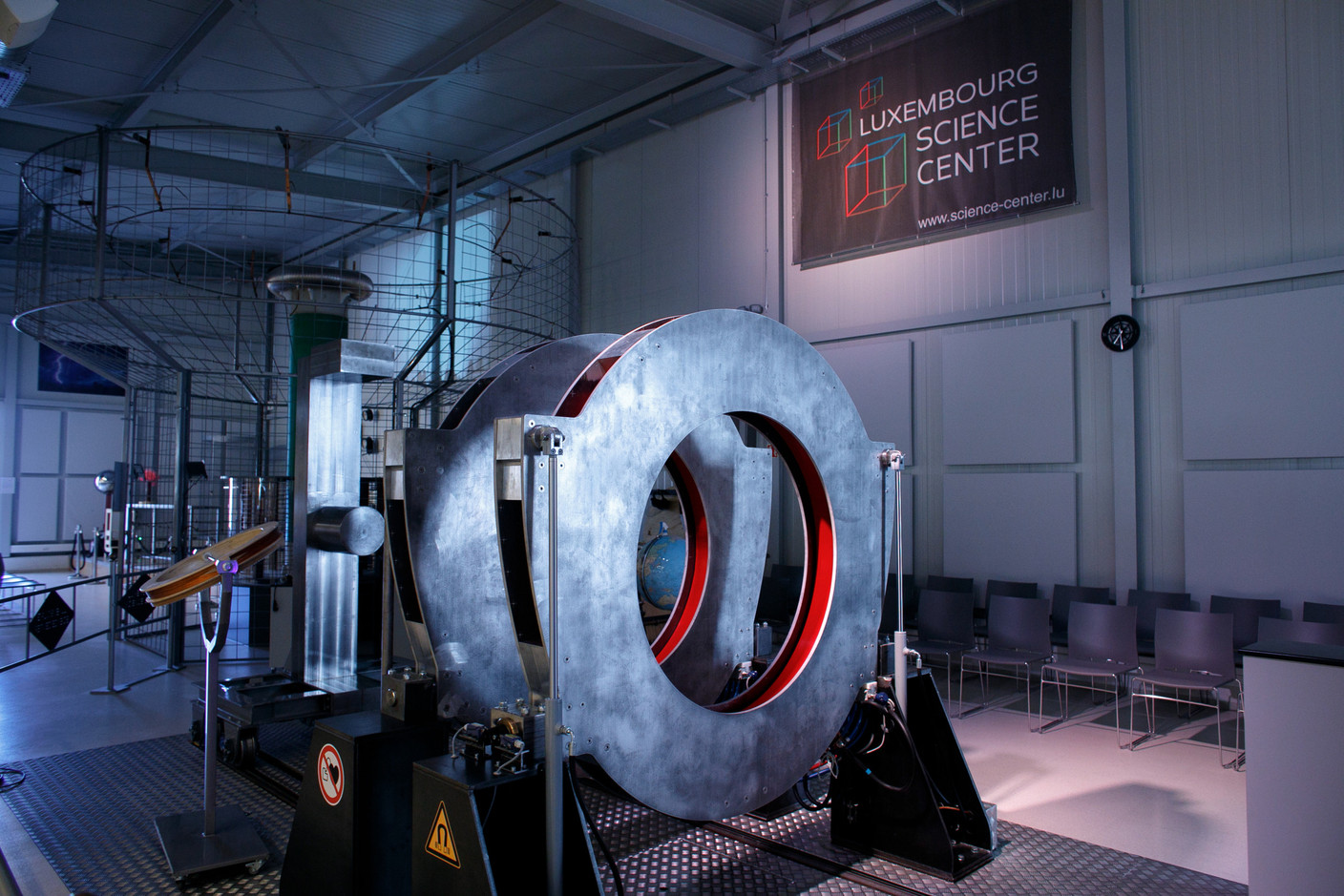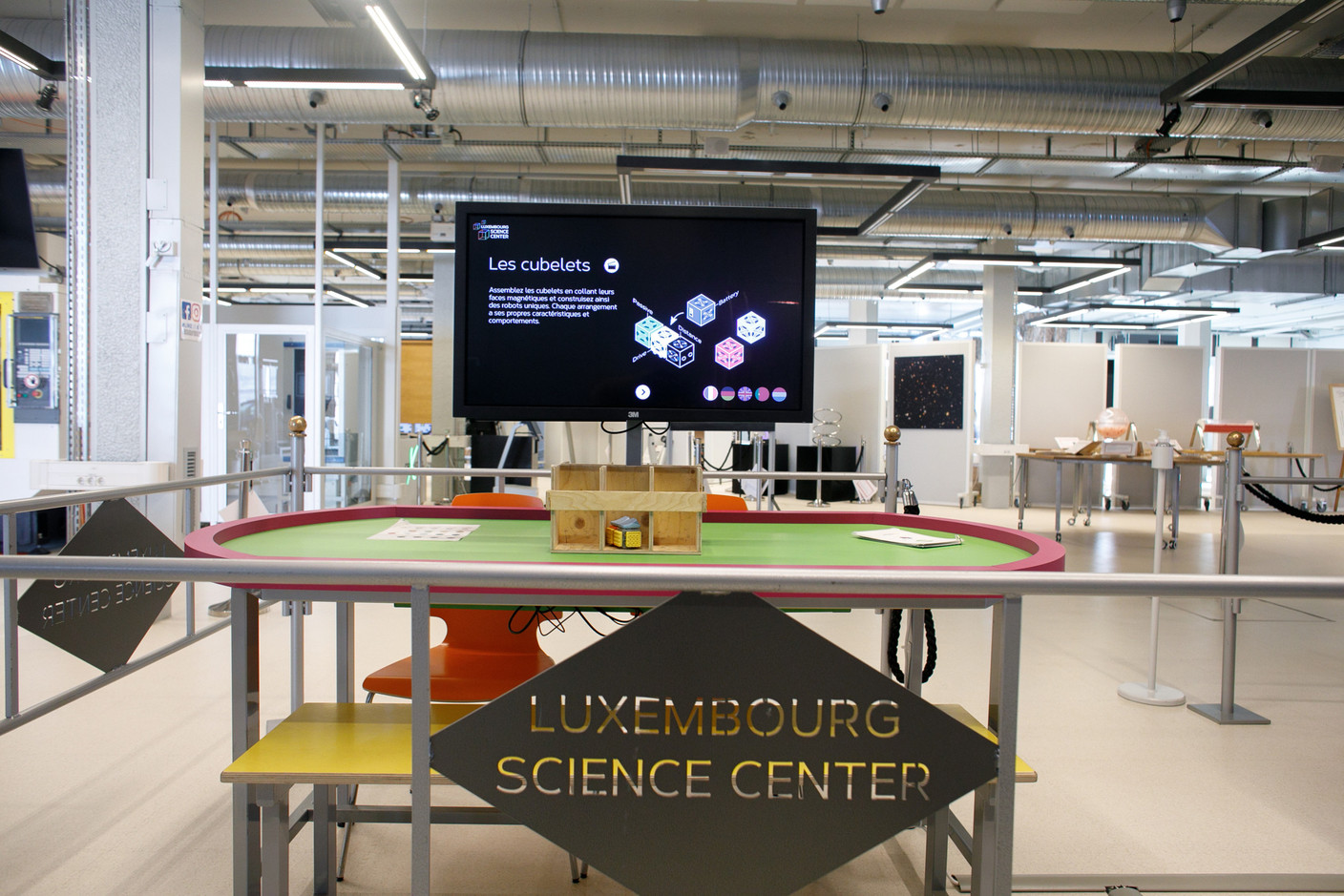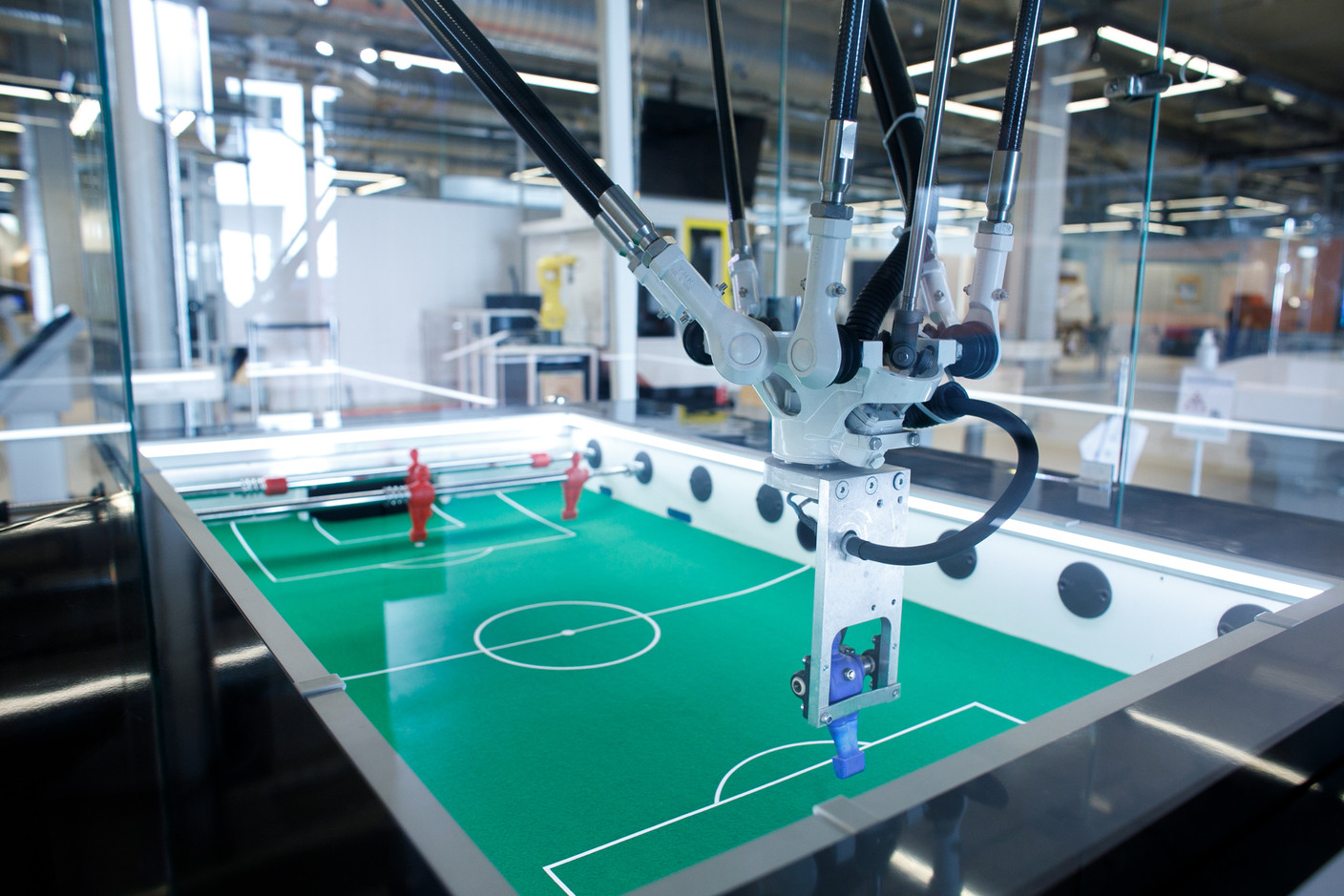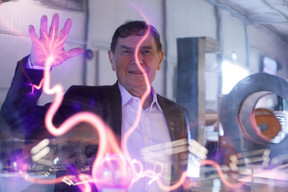The Luxembourg Science Center is celebrating its fourth anniversary on 4 October. How do you look back on these four years of existence?
We are more than satisfied with the progress we have made, we have had a great evolution. And when you look at the business model we defined at the time, we are exactly where we wanted to be today. Of course, we should not take into account 2020 and even the beginning of 2021 because of covid-19. But at the moment, in terms of the number of 'general public' visitors, we are 70% higher than the corresponding period in 2019. In August, we even had a 100% increase in visitors. We also had an average of 165 visitors per day, although the situation has not yet returned to normal due to limitations. We are still limited in the number of visitors. We have also installed Hepa filters to ensure the safety of our visitors.
The concept is based on interactive experimental stations, which visitors can explore freely, how many are there today?
"Today we have more than 80, and we should quickly reach 100 by the end of the year. We will be at LuxExpo this week at the '5G - Connecting tomorrow' exhibition, for which we have developed five experimental stations dedicated to 5G, which will then be installed at the LSC. We will also have stations dedicated to artificial intelligence, and we are also working with the ministry of the environment on the subject of climate.
How would you explain the concept of the Luxembourg Science Center?
"I would say that we are messengers of science. We have to explain, motivate, and we are a better vector than a simple poster thanks to our playful and educational aspect, for young and old alike.
Where do the ideas for your experimental stations and shows come from?
"There is a melting pot of ideas within the team--about 50 people work at the Luxembourg Science Center, 25 of whom are focused on contact with the public, and the others are designers, engineers and computer scientists. Before building the Luxembourg Science Center, we went to see what was being done elsewhere in the world, such as in Switzerland or in Paris with the Palais de la Découverte. The first thing that Guillaume Trap--the centre's scientific director--and I said to ourselves was that we had to be the Palais de la Découverte and the Cité des Sciences together, that was our basic premise. We also wanted to have stations and shows like at the Palais de la Découverte, with interactive experiments conducted by our mediators. Secondly, we didn't want a model that was too academic, that was only aimed at a minority of the population: scientists, professors, researchers, those who love science, etc. Our mission is to make a bigger breakthrough so that more people are interested in science. So we thought it was absolutely necessary to link everyday life to science, and not the other way round.
We need to get young people interested in science?
"Exactly, and we have an orientation component in a programme that is currently aimed at schoolchildren and students, but the aim is also to appeal to parents afterwards. The idea is to say to young people 'what do I want to do at 13? This is a pivotal age, with the start of secondary school in the Luxembourg system, there is a path to follow and decisions to be made. So in this programme called 'Orientation: Science & Technology', we cover practically all subjects of science, technology, engineering, mathematics. Things had started well before covid-19, we already had a good thousand students who had gone through this programme, from about ten high schools. This guidance component was developed through the European Social Fund, with the Maison de l'orientation, the high schools, and in order to link this to the economic reality, we associate economic actors such as the chambers of trade, commerce, large companies, etc. Our role is not to train, but to show the choices and options. There is a discrepancy between supply and demand. Many companies, such as design offices, are looking for engineers, but due to a lack of information, visibility, and therefore interest on the part of young people in these sectors of the future, they are unable to find candidates.
We are messengers of science.
What is the profile of your visitors?
"53% of visitors are residents of Luxembourg, 28% come from France, 12% from Belgium and 5% from Germany. It is with this last population that we still need to make efforts in terms of communication. However, the visitors who come from Germany come from much further away, such as Cologne, Koblenz or Frankfurt, which shows that there is enormous potential. We also have a lot of people who come back to see us, especially to discover the new products. We have between 25% and 35% of visitors who come back, and these 35% are families whose children have already come once with their school.
In 2017, you announced an annual operating budget of €3m. Is this still the case?
"Yes, from an operational point of view, we are still at that level. We are also trying more and more to be self-financing, we are at about 25% of self-financing, and the objective is to reach 50% in four to five years, when we will be in phase 2 of our development.
What is planned for phase 2?
"Currently we have about 4,200m2, with a "normal" attendance of 55,000 visitors in 2019, excluding covid related visits. We are still working on the extension of the Luxembourg Science Center, together with the government and the city of Differdange, in a historical hall, the gas power plant of the Differdange factory: a hall from 1905 where the Groussgasmaschinn is located. We would like to open in 2027 or 2028. With regard to the Groussgasmachinn, the largest combustion engine in the world, which has been protected as a historical monument since 2008, we want to do more than just show it to industry specialists, and put it into a future context. It is almost as powerful as the offshore wind turbines, which weigh 30,000 tonnes, while the engine weighs 8,000 tonnes. It is still too early to talk about the budget for this project, in which several ministries, the Feder and ArcelorMittal--which still owns the hall--are involved. It should be noted that the gas power plant building has also been protected as a historical monument since 2018.
You have been Consul General of Luxembourg in New York, you are in the United States for most of the year in the framework of IP Finance, a company that you created for the structuring and licensing of intellectual property, why did you establish the Luxembourg Science Center four years ago?
"I have always had a passion for science, and I am also the founder of the 1900 train. And there was a moment in my life, around the age of 18, when I had to choose between becoming an engineer and becoming a lawyer. I said to myself that I could do engineering in my spare time, so I studied law. In 2007, I received a call from François Biltgen, who was then minister of culture and research, who said to me 'the Groussgasmaschinn has just been classified as a national monument, what can we do with it?' The concept of the Luxembourg Science Center was to say: if we want to preserve this, and if it justifies investing public money in it, we need a concept."
This article in Paperjam. It has been translated and edited for Delano.
